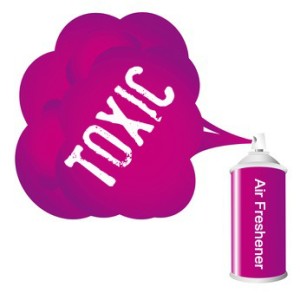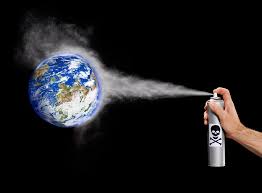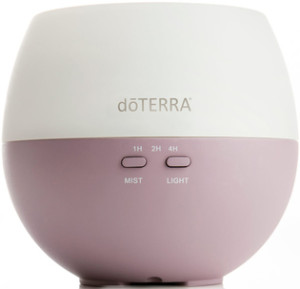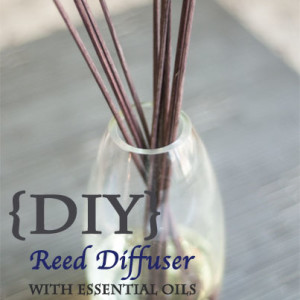Even Time Magazine and Woman’s Day has reported on the toxicity and lies we have been sold about air fresheners and other synthetically fragranced products recently so I am thankful that this information is coming to light.
Yet still everywhere I go I have to cover my face in a public bathroom and get an instant headache and feel nauseated trying to breathe with little/no ventilation and this rubbish spraying in my air space every few seconds! I am particularly sensitive to chemicals yes, but that doesn’t mean just because you don’t notice it immediately, that it’s not having long term detrimental consequences to your health as well.
Why are air fresheners so toxic?
As Woman’s Day reported, air fresheners have been linked to lifelong health issues like asthma and interfering with hormones.
Public Health England’s Center for Radiation, Chemical and Environmental Hazards found that these fresheners contain “considerable levels of formaldehyde,” which can cause nose and throat cancer.
In a 2013 International Journal of Public Health study, researchers found that pregnant women who had used air fresheners were “significantly more likely to have babies that suffered from wheezing and lung infections.” But SC Johnson, who produces the Glade air fresheners, claims that its products are completely safe. Can we determine that for sure? Women’s Voices for the Earth thinks not. They believe the air fresheners interfere with babies’ hormonal development.
The scariest part about what scientists found was that you don’t even need to light the candle for it to be dangerous to your health.”Simple evaporation will enable them to pollute your home,” reports the Daily Mail. “Other studies show the chemicals are capable of being absorbed by the body simply through touching the candles.”
Once lit, scented candles can produce dangerous chemicals like formaldehyde and paraffin, and long-term exposure can raise your risk for respiratory issues and cancer.
The annoying thing is this information has been around for YEARS and still nothing is being done to protect people.
When Time reported on this back in 2007, a recent study had come out from the Natural Resources Defense Council (NRDC). They had evaluated 14 air fresheners off the shelf of a local Walgreens and found-
“12 contained variable amounts of substances called phthalates (pronounced THAL-ates), a group of chemicals that are used to dissolve and carry fragrances, soften plastics and also as sealants and adhesives. Phthalates are commonly found in a variety of products, including cosmetics, paints, nail polish and children’s toys — and have long been at the center of a larger international controversy over their health effects.
Studies involving rat and human subjects have suggested that high exposures to certain kinds of phthalates can cause cancer, developmental and sex-hormone abnormalities (including decreased testosterone and sperm levels and malformed sex organs) in infants, and can affect fertility. The U.S. Food and Drug Administration has no regulations on the use of phthalates, does not require the labeling of phthalate content on products and does not consider the quantities to which people are exposed to be harmful. But other countries think otherwise. In 2004, the European Union banned two types of phthalates in cosmetics and also bans the chemical in children’s toys, as do 14 other countries. The first state bill to ban phthalates in children’s toys in the U.S. is currently sitting on California governor Arnold Schwarzenegger’s desk, and he is expected to sign it this week.
Plug-in, spray or stand-alone liquid and gel air fresheners are used in nearly 75% of U.S. households, and the market has doubled since 2003 to $1.72 billion. The NRDC tested products, including those labeled “all-natural” or “unscented,” and found a wide range of phthalate content, from zero parts per million (ppm) to 7,300 ppm. Many air fresheners contained a phthalate known as DEP and some also contained DBP, which are listed by the California EPA’s Office of Environmental Health Hazard Assessment as a developmental toxin and female and male reproductive toxin, respectively.”
Even on Ambi Pur’s own Plug In information sheet they say the following
Classification : Sensitising. Dangerous for the environment, N
Physical/chemical hazards : None. (I’d love to see proof of this one)
Environmental hazards : Toxic to aquatic organisms, may cause long-term effects in the aquatic environment. Do not empty into drains.
Human health hazards : May cause sensitisation by skin contact. Other information : Keep out of reach of children. Avoid contact with skin. Wear suitable gloves. If swallowed, seek medical advice immediately and show this container or label.
This great article from Green Living breaks it down for us
What You NEED to Know:
DBP=di-butyl phthalate—has been linked with changes in hormone levels, poor semen quality, and changes in genital development.
DEP=di-ethyl phthalate—a reproductive toxin recognized by the State of California and the National Toxicology Program; linked to changes in hormone levels, poor semen quality, and changes in genital development.
DIBP=di-isobutyl phthalate—similar effects as DBP. Has been linked to decreased testis weight and low testosterone levels in animals and changes in male genital development in humans.
DMP=di-methyl phthalate—insufficient testing to determine effects.
DIHP=di-isohexyl phthalate—known male reproductive toxin linked to birth and developmental defects.
Even in Low Doses:
Additionally, new scientific research has been disproving the outdated belief that “the dose makes the poison.” In other words, that you have to have a high toxic exposure to have harmful health effects. With the advent of newer testing equipment along with greater volumes of research scientists have disproved this belief, particularly with hormone disruptors. Sometimes even seemingly miniscule amounts can have serious health consequences.
And as explained in this article there are even MORE issues with these products
1,4-dichlorobenzene (1,4-DCB).1,4-DCB is reasonably anticipated to a human carcinogen, and has been shown to cause kidney and testicular cancer in rats. It also has been shown to cause reduced lung function and increased asthma rates in humans.
Air fresheners may also contain some really gross chemicals that won’t show up on the label. A 2007 study tested 74 air freshening products and measured the concentration of VOCs in the air after use. They reported that a total of more than 350 different chemicals and allergens were detected, including (but not limited to!) benzene, formaldehyde, styrene, and phthalates.
Spray bottles (aerosol) cause additional health risks due to ingredients used as propellants, such as butane and propane.
There are also many similar and related issues with incense, conventional perfume, synthetic based essential oils and candles and other body/household care products.
So what can you do??!
- Stop using air fresheners/sanitizers/deodorizers/plug ins/car fresheners immediately
- Make the office you work in an air “freshener” free space. If you don’t run the office show them this article and ask that such a policy be invoked. Use words like “essential for health and safety” and posing a “public health risk” and “dangerous liability”. That should get them moving. If they refuse to comply protest by switching them off at the wall whenever you go in. Printing this article out and sticky taping it to the wall in the bathroom and colluding with other employees to join you to get rid of it! Yes, become a crazy activist, the ripple effect will be worth it.
- Open a window and get some plants
- Make your own safe and natural air freshener using 100% pure essential oils (most have synthetics in them I use and recommend doTERRA essential oils for their purity & safety). Get a glass spray bottle and use pure filtered water to make your own, I like 15 drops Purify blend, 10 drops Lemongrass, 5 drops Peppermint. Shake before use and spray.
- Add a few drops of your favourite essential oil such as Lemongrass to the inside cardboard section of the toilet roll. It’s extremely effective and safe.
- Write a letter of complaint to your local member
- Use a diffuser with pure essential oils or make your own DIY reed diffuser




